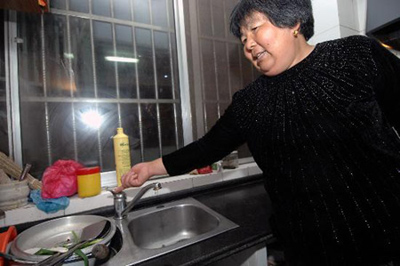Water supply resumes in E. China city
(chinadaily.com.cn/Xinhua)Updated: 2007-07-04 15:30
Related: Water pollution affects 200,000 in E. China city
Water supply has returned to normal in the urban areas in Shuyang County, east China's Jiangsu Province Wednesday morning after a 40-hour suspension caused by pollution that reportedly affected more than 200,000 local people.
Examination results of sample water show the level of lead, ammonia, and azote per cubic water stood at 0.00099 mg and 0.49 mg respectively, which is up to national standard for drinking water, sources with the local disease control and prevention center said.
Harmful substances were detected in the water at 3:00 p.m. on Monday and the level of 28 mg ammonia and azote per cubic meter is about 34 times the upper limit for drinkable water.
An initial investigation indicated water pollutants from upper reaches of the Xinyi River, which originated in Shandong Province, entered the Shuyang Section at a speed of 350 cubic meters per second, causing the level of ammonia and azote in every cubic of water 34 times the standard for drinkable water.
The county government had asked Shandong to help trace the pollution to its source.
Emergency plans were started to ensure the drinking water supply for local residents, with alternative water supplies from 33 unpolluted wells. Warnings of the pollution were issued through TV, broadcast and newspapers.
The county had also diverted water from Hongze Lake into local water sources to dilute the pollutants, a spokesman with the county government said.
Jiangsu suffered another water crisis at the end of May, when a severe blue-green algae outbreak left tap water undrinkable for a week for half of the 2.3 million residents in Wuxi city.
Barely two weeks after the water returned normal, satellite pictures captured on June 15 indicated another algae bloom spanning 800 square kilometers in the central-western and northern parts of the lake, causing wide-spread concern in cities along China's third largest fresh water lake.
|
|
|
||
|
||
|
|

